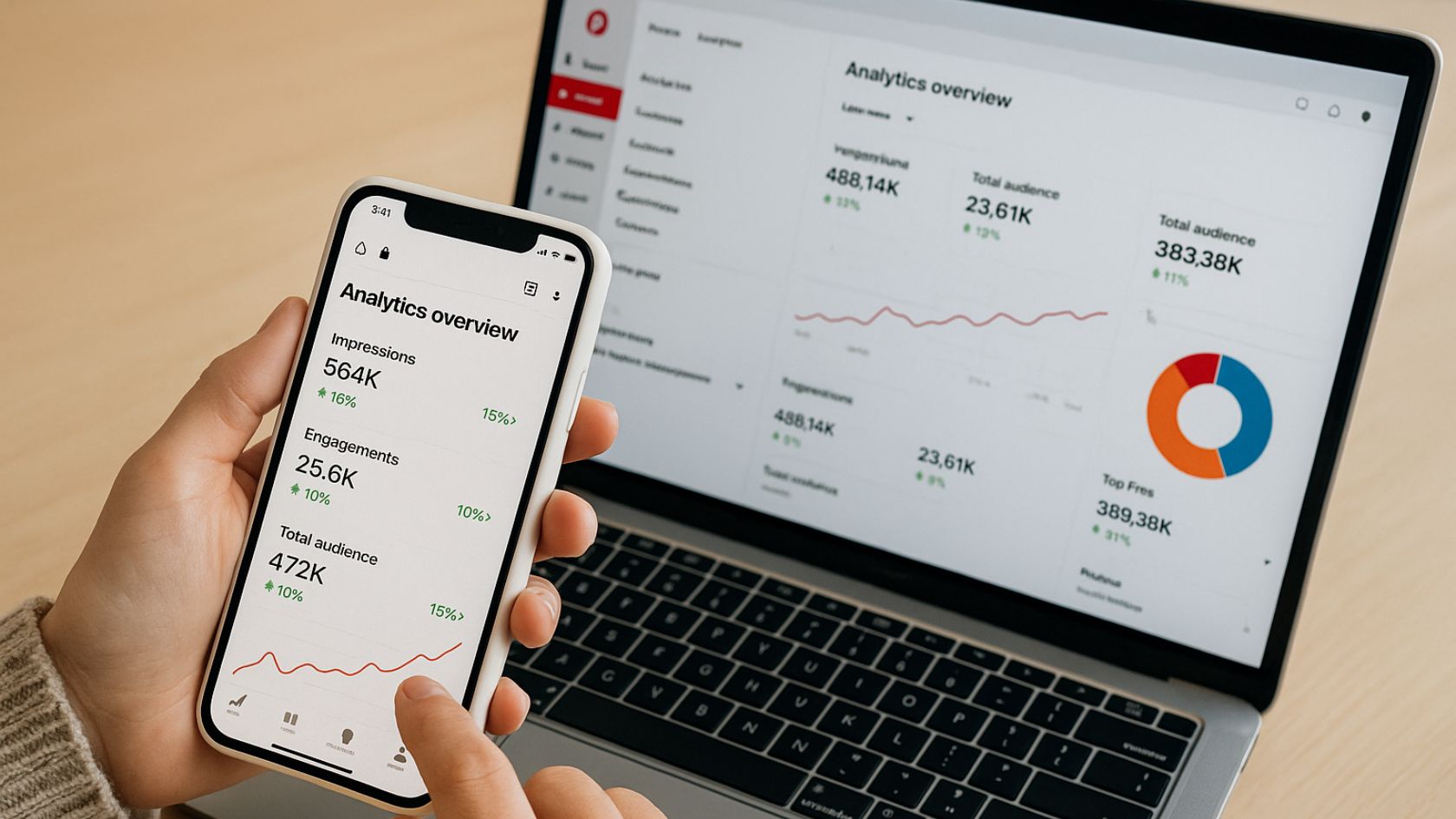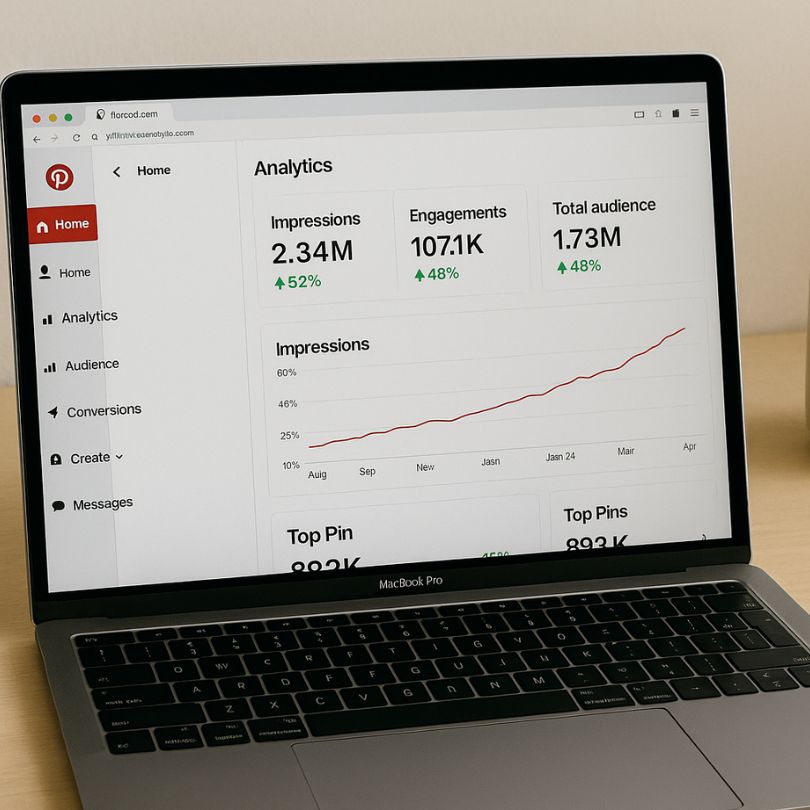
Scaling Pinterest Traffic: A Complete, Actionable Guide for Sustainable Growth

Scaling Pinterest Traffic starts with understanding how the platform blends search intent, visual discovery, and evergreen content to create compounding reach over time.
Unlike purely social feeds, Pinterest behaves like a visual search engine where high‑quality, keyword‑relevant Pins can rank and drive consistent clicks for months or even years. If your goal is to reliably grow impressions, saves, and click‑throughs, you need a system that layers audience research, creative execution, and iteration. A great primer on how to build an audience on Pinterest will orient you to the platform’s strengths, but this guide turns that knowledge into a step‑by‑step operating plan.
Think of Pinterest growth as a flywheel: you validate search demand, publish helpful visuals that match that demand, distribute them with smart board architecture and scheduling, then double down on winners found in analytics. As this loop repeats, you publish faster, target better keywords, and capture more intent—leading to compounding traffic and revenue.
Success also depends on disciplined experimentation. Borrowing rigour from marketing science—with hypotheses, control groups, and pre‑defined success metrics—prevents random acts of content. If you’re new to systematic testing, reading up on A/B testing frameworks can strengthen how you structure experiments for creatives, titles, and landing pages.
The Pinterest Growth Flywheel
- Intent discovery: Identify keywords and themes your ideal audience searches for.
- Content creation: Design Pins that answer questions and solve problems visually.
- Distribution: Publish to relevant boards, optimize metadata, and schedule for consistency.
- Feedback: Use analytics to find winners, then scale and repurpose them.
Set Up for Scale: Profile, Foundations, and Architecture
1) Nail the profile basics
- Clear brand name and logo; concise bio with primary benefit and core keywords.
- Claim your website and enable Rich Pins so titles and meta update automatically.
- Create 8–12 boards mapped to your main topics; each with keyword‑focused titles and descriptions.
2) Research keywords like an SEO
- Use Pinterest’s search bar autocomplete to list seed topics and long‑tails.
- Collect variants: singular/plural, seasonal angles, and modifiers like “ideas,” “tips,” “checklist.”
- Prioritize by intent clarity and monetization potential (lead magnets, products, affiliate content).
3) Design a board taxonomy that mirrors search demand
- From broad to narrow: e.g., “Meal Prep” → “High‑Protein Meal Prep” → “30‑Minute Meal Prep.”
- Cross‑link related boards within descriptions to strengthen topical relevance.
- Maintain a private “Staging” board to hold new Pins until scheduled.
Content That Compounds: Pin Types and Templates
Create a template library so publishing scales without creative burnout. For each core topic, make 4–6 on‑brand templates (vertical 1000×1500 or 1000×1800), with editable fields for headline, subhead, image, logo, and CTA. Keep contrast strong, text legible on mobile, and promise a clear outcome (“How to…,” “X Ideas for…,” “Checklist for…”).
- Standard Pins: Static visuals with a single idea or tip that links to a deep resource.
- Idea Pins: Multi‑page mini‑tutorials; great for engagement and following (use sparingly if your KPI is outbound clicks).
- Product Pins: For e‑commerce catalogs; include price, availability, and benefits.
- Lead magnet Pins: Offer a checklist, template, or mini‑course to capture email—your best hedge against algorithm shifts.
On‑Pin SEO: Metadata That Matters
- Filename: Use descriptive filenames before uploading (e.g., high-protein-meal-prep-ideas.png).
- Title: Place the primary keyword near the start; include a benefit or number.
- Description: 2–3 sentences that work naturally in search; add 2–4 keyword variants.
- Alt text: Describe the visual plainly for accessibility and context.
- Boards: Publish to the most relevant board first; avoid posting the same Pin to many boards at once.
Publishing Cadence and Workflow
Consistency beats bursts. A sustainable baseline might be 1–3 new Pins per day, with 70–80% of effort on truly “fresh” creatives. Batch your workflow weekly: research on Mondays, design on Tuesdays, write titles/descriptions on Wednesdays, schedule on Thursdays, analyze and iterate on Fridays.
Pro Tip: Maintain a content calendar with seasonal spikes (e.g., Q4 holidays, spring cleaning, summer travel) and begin publishing 30–45 days ahead so Pins index before the demand peak.
Analytics and Experimentation
Metrics that guide judgment
- Impressions: Early signal of search alignment and visual appeal.
- Saves: Quality vote; indicates long‑term utility and future distribution.
- Outbound CTR: The money metric if your goal is traffic or conversions.
- Assisted conversions: Track UTMs in analytics platforms to see Pinterest’s halo‑effect.
Design smart tests
- Hold the URL constant; vary headline or background image to isolate effect.
- Test power words (“Checklist,” “Template,” “Beginner,” “No‑Fail,” numbers, time promises).
- Compare lifestyle vs. product imagery; try plain backgrounds for text‑led pins.
- Iterate on winners: new colorways, alternate photos, new hooks targeting the same keyword.
Accelerate with Ads (Without Burning Budget)
Use Pinterest ads tactically to validate and scale winners. Start with small daily budgets promoting Pins already proving strong saves or CTR. Target exact‑match keywords and tight interests. Retarget engagers and site visitors. Cap frequency and rotate creatives weekly to combat ad fatigue. Paid should amplify what works organically—not replace the flywheel.
Automation, Naming, and Hand‑Off
- Template naming: KW_Topic_Template-A_v1 so results map back to creatives.
- UTM hygiene: utm_source=pinterest&utm_medium=social&utm_campaign=pin_kw_topic for every URL.
- Asset library: Centralize fonts, colors, icons, and photos for plug‑and‑play creation.
- SOPs: Write a 1‑page checklist anyone can follow to research, design, publish, and log results.
Common Mistakes That Stall Growth
- Thin, generic headlines that don’t promise a concrete outcome.
- Posting the same creative across many boards instantly (looks spammy, throttles reach).
- Neglecting “freshness” (Pinterest highly values new images and new angles).
- Mismatching keyword intent and landing page content (hurts CTR and trust).
- Ignoring seasonality and publishing too late for key moments.
A 90‑Day Plan to Start Scaling Pinterest Traffic
Days 1–7: Foundations
- Audit profile, claim domain, enable Rich Pins, finalize 10 core boards with keyword descriptions.
- Research 50–100 long‑tail keywords mapped to post categories and products.
- Build 24–36 templates (4–6 per category) in your design tool of choice.
Days 8–30: Publish and Learn
- Publish 2–3 new Pins daily targeting different long‑tails; log creatives and UTMs.
- Run 1–2 micro‑tests per week (headline vs. image; color scheme A vs. B).
- Identify 3–5 early winners to repurpose and promote modestly.
Days 31–60: Double Down
- Scale winners with 3–5 new variants each; test alternate hooks and imagery.
- Introduce limited ads to validate reach; expand keyword set cautiously.
- Ship one lead magnet aligned with your top‑performing keyword cluster.
Days 61–90: Systematize
- Templatize your research → design → publish → analyze loop with SOPs and checklists.
- Batch production weekly; automate scheduling; maintain a rolling 30‑day calendar.
- Review analytics; prune underperformers; plan next quarter’s seasonal spikes.
Advanced Tactics to Extend Your Edge
- Cluster strategy: Build multiple posts and Pins around one monetizable theme to dominate a niche.
- Content remixing: Turn a blog post into a checklist Pin, a before/after Pin, and a mini‑tutorial Idea Pin.
- Bridge channels: Use email to resurface evergreen Pins; vice‑versa, Pin email‑only templates.
- Competitive scanning: Note headline patterns, color palettes, and imagery that win in your space; adapt ethically.
FAQs
How fast can I see results?
New accounts often need 30–60 days to gain traction, though individual Pins can pop sooner. Expect compounding gains as your library and board relevance grow.
How many Pins per blog post are ideal?
Start with 3–5 unique creatives per URL across different hooks and images. Publish variants over weeks—not all at once—to avoid cannibalization and to learn which angle resonates.
Do I need to post daily?
Daily consistency helps, but quality and relevance matter more. A reliable cadence of 1–3 fresh Pins per day beats sporadic bursts.
Conclusion
Scaling Pinterest Traffic is a process you can trust: research intent, design purpose‑built creatives, publish consistently, and iterate with discipline. Use analytics to elevate what works and cut what doesn’t. When you’re ready to expand into paid or competitive research, explore ad intelligence tools to spark new creative angles and keyword ideas—then feed those insights back into your flywheel. With a steady tempo and a testing mindset, the growth you earn on Pinterest will stack month after month.